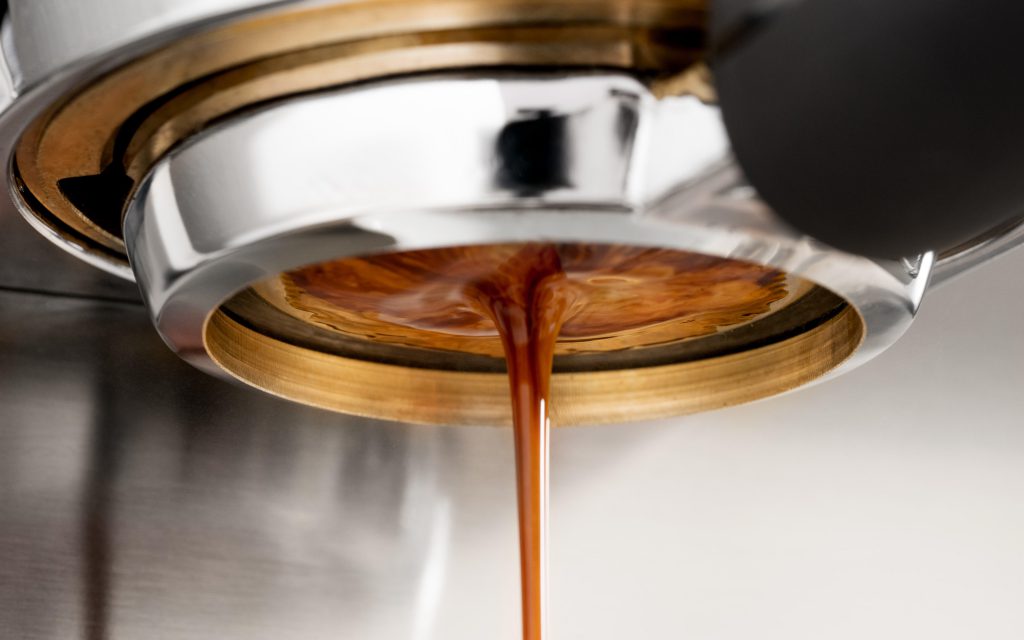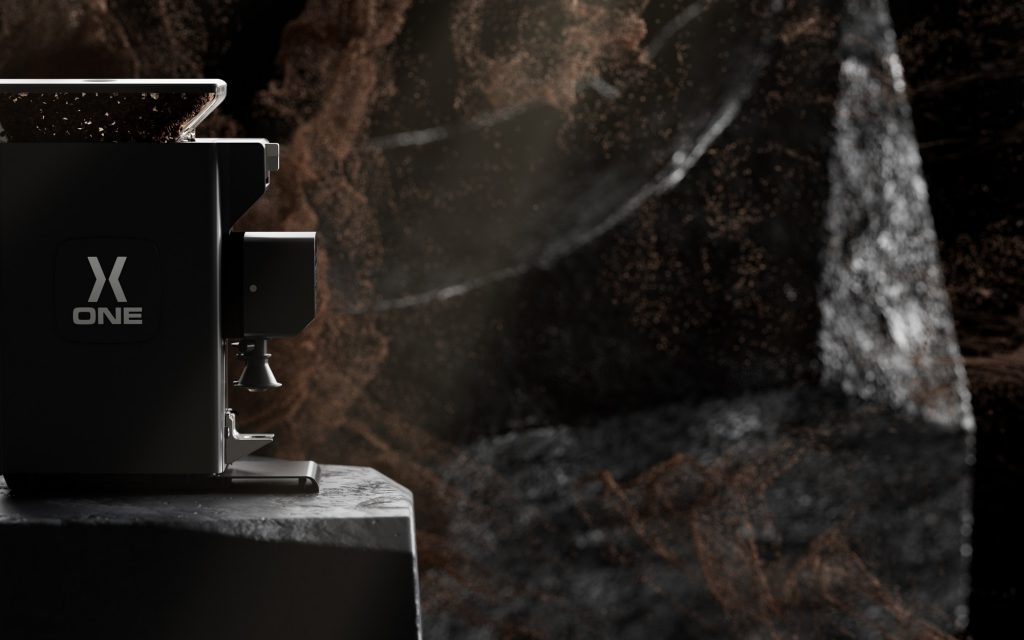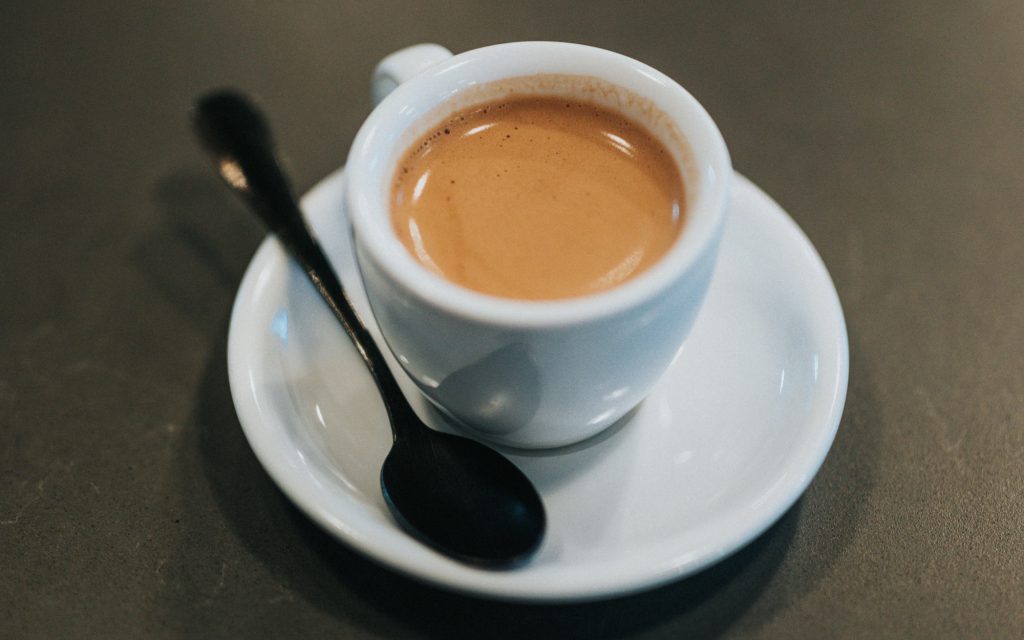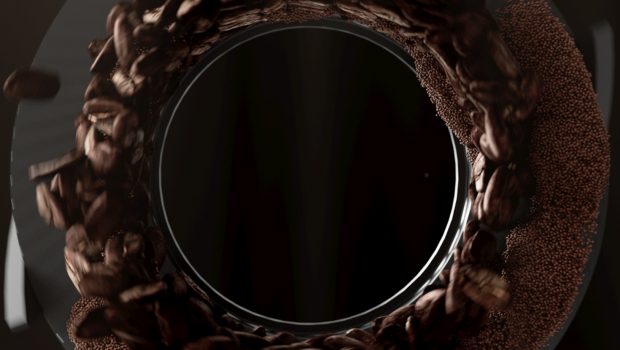How has grinder technology developed to preserve coffee freshness?
https://www.ispeech.org/text.to.speech
As many coffee professionals will confirm, if you want to pull excellent espresso shots, investing in a high-quality grinder is essential. While the espresso machine itself is of course a major factor, grinders play a huge role in making sure your coffee tastes as good as it can.
Once ground, coffee loses up to 70% of its retained carbon dioxide, as well as a significant amount of volatile aromatic compounds. Ultimately, both of these indicate an almost immediate loss of freshness.
To mitigate this as much as possible, more and more manufacturers are beginning to incorporate new technologies into their grinders. Not only can these preserve coffee freshness for longer, they can also help to reduce waste and provide baristas with more consistent doses.
I spoke with two professionals at Sanremo Coffee Machines to learn more about how grinder technology has developed to preserve coffee freshness. Read on to find out what they had to say.
You may also like our article on single-dose coffee grinding.
Coffee freshness is inherently linked to coffee quality, but why is this? And how does it affect grinding?
Although green beans can stay fresh for up to 12 months, roasted coffee is much more unstable. This is because the roasting process causes the cell structure of coffee beans to irreversibly change and break down – trapping gases (mainly carbon dioxide) inside of them.
As soon as coffee is ground, it releases a large volume of carbon dioxide into the atmosphere, and becomes much more susceptible to oxidation.
Andrea Zamprogno is the Head of Electronic Development at Sanremo’s R&D Department.
He explains why oxidation occurs at a much faster rate once coffee is ground.
“Essentially, ground coffee particles have a much greater surface area [than whole bean coffee], so they are more exposed to oxygen,” he says.
When exposed to oxygen for even just a few minutes, coffee can begin to develop rancid and stale flavours. Although ground coffee can be stored in airtight containers to preserve freshness, it is recommended to grind coffee fresh for each shot to ensure you experience its full range of flavours and aromas.

Timed vs volumetric grinders: how do they affect freshness?
There are a number of different kinds of grinders available on the market, and each has its own impact on coffee freshness.
Danilo Llopis is the Head of Sanremo’s R&D department. He tells me that most grinders dispense ground coffee based on either a preset time or weight.
The former are known as timed grinders. When using this type of grinder, if a barista requires an 18g dose for their espresso recipe, for instance, they need to know how long it will take to grind this amount of coffee. Once they have established this, the barista can preset the grinder to dispense coffee grounds for this specific amount of time (usually around 5 seconds).
In theory, this will result in 18g of coffee, however, many variables can stop you from dosing accurately day-in day-out – including adjustments to the grind size as well as grind retention. This is when old, stale coffee grounds remain in the grinding chamber and on the burrs, potentially meaning that more off-flavours extract in the cup.
In fact, when conducting research with the Coffee Excellence Centre at the Zurich University of Applied Sciences (ZHAW), Sanremo found that grind retention had a major impact on extraction.
Their findings concluded that for every minute that old coffee grounds remain in the grinding chamber, there is a significant drop in aromas and flavours in the extraction. These effects were even more pronounced when the grinder had not been used for up to 20 minutes.
“Depending on the shape and size of the grinding chamber, the volume of retained coffee grounds can reach up to a couple of grams,” Andrea says.
To help reduce grind retention, some coffee professionals use volumetric grinders with preset weights for dosing. These measure the ground coffee’s weight as it is dispensed into the portafilter, and the motor automatically stops once the target weight is reached.
While volumetric grinders are generally more accurate at dosing than timed grinders, they also come with their own challenges. No matter which type of grinder you use, there are a number of factors which affect the consistency and accuracy of ground coffee measurements.
For instance, the volume of beans in the hopper can influence the accuracy of dosing. A hopper containing a higher volume of coffee beans will usually result in more accurate doses than one with fewer beans – largely because the weight of the beans pushes them down towards the burrs and into the grinding chamber.
Moreover, the heat produced from a grinder’s motor can also negatively affect coffee freshness. As ground coffee absorbs heat, it is more prone to losing its volatile aromatic compounds to the surrounding air.

New grinder technologies and freshness
As a response to the effects of grind retention and dose inconsistencies on coffee freshness, more and more grinder manufacturers have started to develop new preventative technologies.
One of these grinders is Sanremo’s X-ONE, which uses pre-prepared grinding technology to optimise freshness and increase dosing accuracy – similar to single-dose grinding.
Danilo explains how the X-ONE’s pre-prepared technology works.
“[The X-ONE’s] hoppers include an internal dosing screw, which dispenses coffee beans into the weighing basket,” he says.
He tells me Sanremo’s “Weight by Beans” software weighs each dose of whole bean coffee before it is ground – ensuring the dose is more accurate.
“As soon as the barista is ready to grind the coffee, the weighing basket opens and the beans are sent to the empty grinding chamber,” Danilo adds.
Sanremo’s Weight by Beans technology can recognise the weight of a single coffee bean, guaranteeing a higher level of precision. Moreover, the X-ONE’s FastCharge pre-dosing technology is able to weigh a new dose while the previous one is still grinding – significantly improving productivity.
“Our pre-dosing feature allows baristas to halve the grinding time when compared to single-dose grinders,” Danilo explains.
As well as improving workflow, these kinds of technologies also help to keep coffee fresher for longer, as it is ground immediately before extraction.
Reducing grind retention is also important, and technologies which help to do so are becoming increasingly prominent. For example, to make sure as little coffee is retained as possible, the X-ONE’s Always Empty chamber releases as many retained grounds as possible after each dose to mitigate the extraction of stale, old grounds.
As well as this, more grinders are including thermal regulation technology to make sure ground coffee absorbs less heat.
“The X-ONE uses a cooling system, which ensures ground coffee stays at an optimal temperature – even during heavy use,” Andrea tells me.
This is especially important as research from the Coffee Excellence Centre and Sanremo found that with every 10°C temperature increase in the grinding chamber, the rate of volatile compound loss from ground coffee almost doubles.
Ultimately, temperature regulation helps coffee to retain more of its volatile compounds so consumers can experience the full range of flavours and aromas.

What are the benefits of pre-prepared grinding for espresso?
First and foremost, pre-prepared grinding allows for more accurate and consistent doses.
In essence, the technology works by weighing out a preset dose of coffee, which is then dispensed into the grinding chamber. Only this specific dose of coffee is ground, as opposed to more traditional grinder technology which grinds coffee as it is being weighed – meaning doses are also more likely to be inconsistent.
Not only can this improve barista workflow, it can also help to reduce coffee waste.
“The X-ONE’s pre-dosing feature ensures the grinder weighs and grinds the preset amount of coffee,” Andrea says. “This also helps to preserve the coffee’s aroma and flavours.”
However, in order to prepare a high-quality espresso, baristas must focus on a variety of extraction variables. These include dose, yield, extraction time, water temperature, and more.
Ultimately, this means baristas need as much support as possible when dialling in espresso – including from the grinder.
New technologies such as Sanremo’s Always Empty grinding chamber can reduce the risk of extracting old, stale coffee. These technologies are especially useful during busy periods when baristas may have little time to clean the grinder themselves.
Furthermore, Danilo mentions the X-ONE’s empty grinding chamber technology makes it easier for baristas to switch between different grind settings.
“The technology means it is easier to dial in different coffees without having to purge the grinder,” he says.
Purging is an essential part of changing the grind setting. This is when a barista dispenses a small amount of ground coffee after making the grind setting coarser or finer. Essentially, this ensures that the right grind setting is being used to extract the coffee.
However, purging often results in waste and can impede workflow. By eliminating it, the X-ONE gives baristas more time to focus on other tasks.
“The Always Empty grinding chamber allows baristas to quickly change the grind setting without needing to clean the chamber and chute,” Andrea tells me.
As well as grind retention, static is also a concern when grinding coffee. As beans pass through the grinder, they pick up electrical charges which cause fine particles of ground coffee to expel from the chute.
Grinders which include vertical grinding chambers and chutes, such as the X-ONE, can help reduce static and lower grind retention – wasting less coffee and reducing clean-up time for baristas.
Data and software are also playing increasingly important roles in grinding technology, including preset grind settings for different coffees.
For instance, the X-ONE allows baristas to programme up to 12 preset grind settings – meaning they can quickly switch between coffees. Baristas can also change the grind speed and doses for each setting.
However, in order to do this efficiently, grinders need multiple hoppers to be able to quickly grind and dispense different coffees. While single-dose grinders include smaller capacity hoppers, larger grinders usually have much bigger hoppers to accommodate for higher volumes of coffee.
Sanremo included multiple hoppers in the X-ONE to make it easier for baristas to switch between coffees. The grinder’s technology is able to weigh two different coffees separately from its main double hopper, while a third hopper can store another coffee.
“The pre-dosing feature can be used independently for each hopper,” Andrea says. “For instance, higher-volume hoppers can be set with the pre-dose feature [to improve workflow].”
Andrea adds that the grind setting can be managed remotely, giving baristas even more time to focus on other tasks.

In order to get the most out of your coffee, you need to make sure it is ground fresh each time you brew. Without doing so, you won’t be able to experience the full range of the coffee’s flavours and aromas.
Using a high-quality grinder is an important part of getting the most out of every cup of coffee. By investing in the right grinder, you can ensure your coffee is vibrant and fresh, and your baristas will get the very best from every single shot of espresso they pull.
Enjoyed this? Then read our article on how fresh is the coffee used in pods?
Photo credits: Sanremo
Perfect Daily Grind
Please note: Sanremo is a sponsor of Perfect Daily Grind.
Want to read more articles like this? Sign up for our newsletter!








Gloss